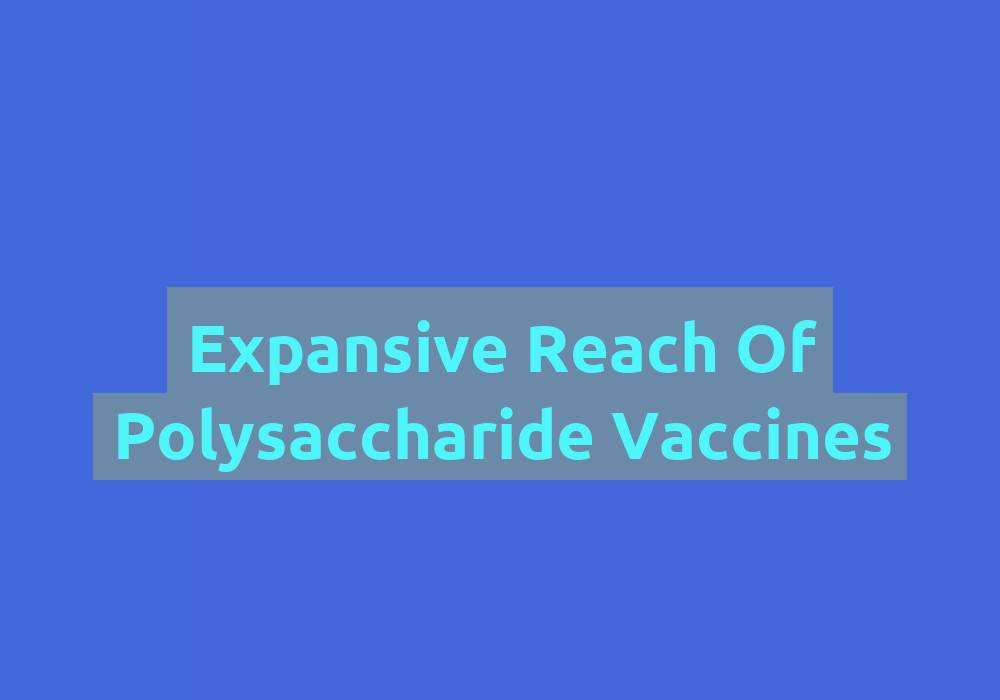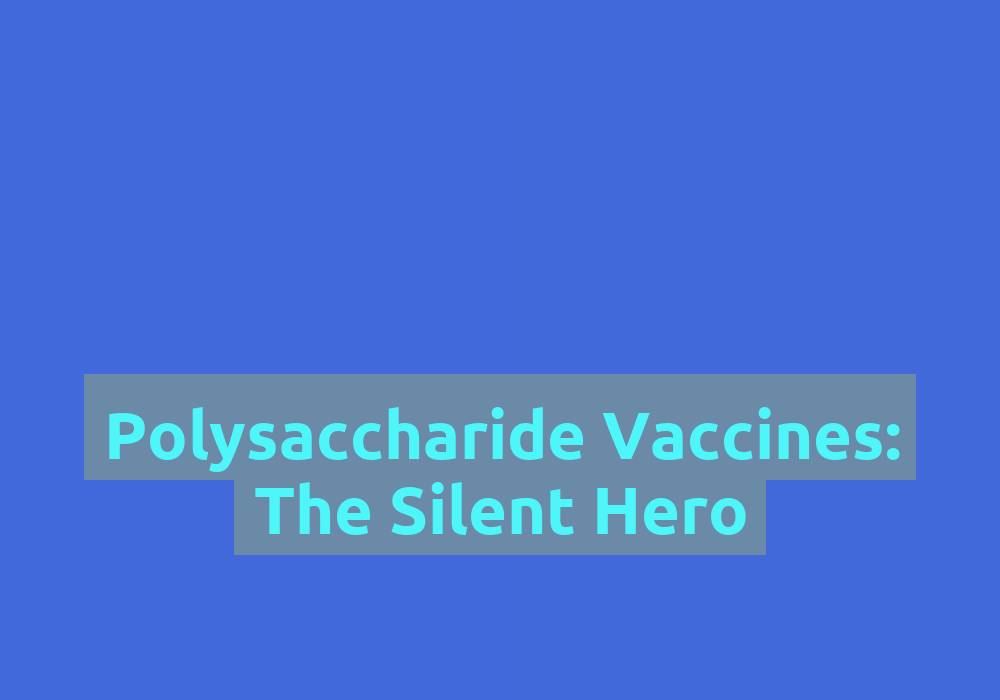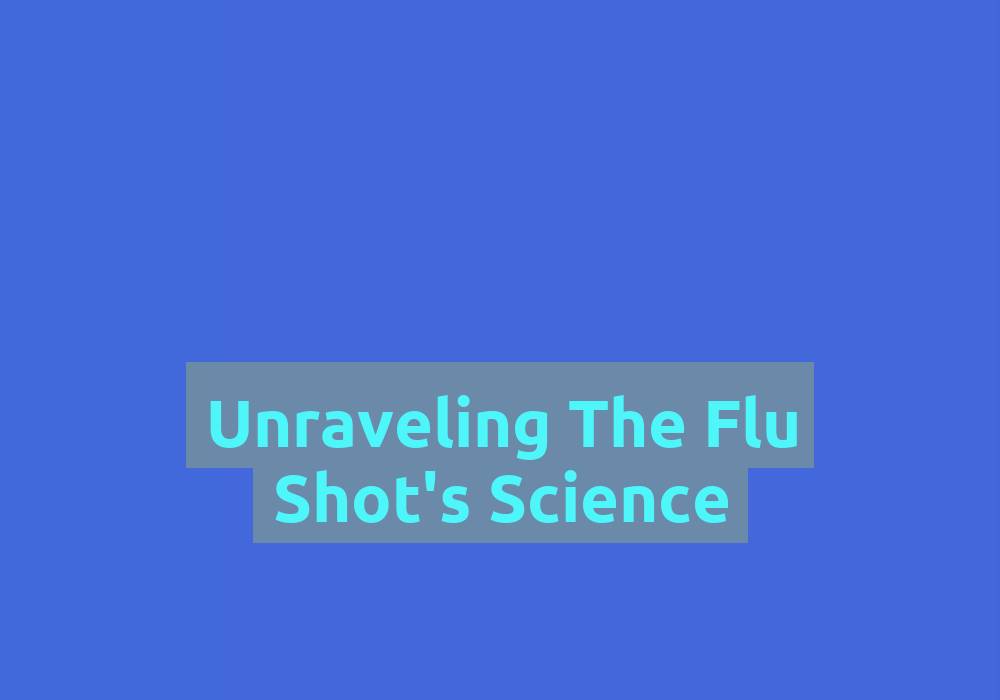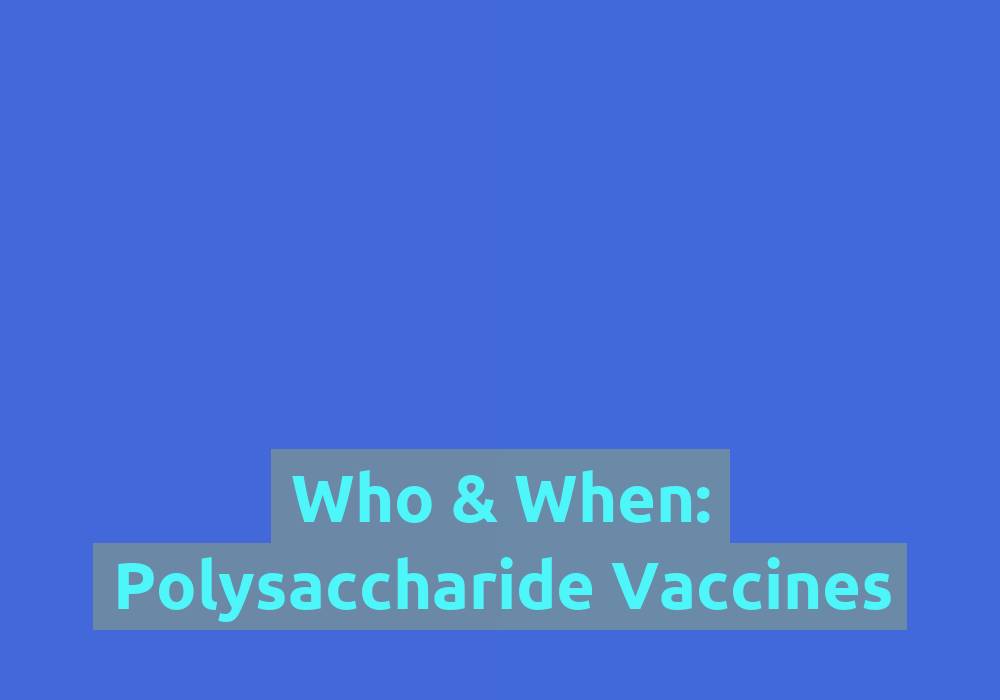Expansive Reach of Polysaccharide Vaccines

Polysaccharide vaccines have emerged as a crucial tool in the prevention and control of various infectious diseases. These vaccines utilize polysaccharides, which are complex carbohydrate molecules, to stimulate the immune system and protect against infections caused by bacteria and certain viruses. With their ability to target a wide range of pathogens, polysaccharide vaccines have gained significant recognition for their expansive reach and effectiveness in improving public health.
What are Polysaccharide Vaccines?
Polysaccharide vaccines are a type of vaccine designed to induce an immune response against specific bacterial pathogens that possess polysaccharide capsules or coats. These capsules serve as protective barriers for the bacteria and are crucial for their survival in the body. By targeting these capsules, polysaccharide vaccines help the immune system recognize and destroy the bacteria more effectively, thus preventing infections.
Polysaccharide vaccines contain purified polysaccharide antigens derived from the bacteria’s capsules. These antigens are either derived from individual serotypes or a combination of serotypes. When administered, the polysaccharides stimulate the production of antibodies specific to the targeted pathogen’s polysaccharide capsule. These antibodies recognize and bind to the capsule, marking the bacteria for destruction by immune cells. This immune response not only eliminates the targeted bacteria but also provides long-term protection against future infections by the same pathogen.
Mechanism of Action
The mechanism of action of polysaccharide vaccines revolves around the stimulation of the immune system’s response to the polysaccharide antigens. When the vaccine is administered, the immune system recognizes these antigens as foreign and mounts an immune response.
Polysaccharide vaccines primarily activate the humoral immune response, which involves the production of antibodies. Antibodies are proteins produced by specialized immune cells called B cells. These antibodies recognize and bind to the polysaccharide antigens, flagging them for destruction by other immune cells.
In addition to the humoral immune response, polysaccharide vaccines can also activate the cellular immune response. This response involves the activation of T cells, which are another type of immune cell. T cells play a crucial role in eliminating infected cells and providing long-term immunity against pathogens.
Expanding Protection Against Pneumococcal Infections
One of the most well-known examples of polysaccharide vaccines is the pneumococcal vaccine. Streptococcus pneumoniae, commonly known as pneumococcus, is a bacterium responsible for causing a wide range of infections, including pneumonia, meningitis, and sepsis. The introduction of pneumococcal polysaccharide vaccines has significantly reduced the burden of these diseases worldwide.
Pneumococcal vaccines are formulated with polysaccharides derived from the capsules of various pneumococcal strains. These vaccines can target up to 23 different pneumococcal serotypes, providing broad protection against a significant proportion of pneumococcal infections. In recent years, pneumococcal conjugate vaccines, which combine polysaccharides with carrier proteins, have been developed to enhance the immune response, particularly in infants and young children.
Pneumococcal polysaccharide vaccines have been shown to be highly effective in preventing pneumococcal infections. They have been associated with a significant reduction in the incidence of invasive pneumococcal disease, pneumonia, and other pneumococcal-related illnesses. The vaccines are recommended for individuals at high risk of pneumococcal infections, including young children, older adults, and individuals with certain medical conditions.
To further enhance the reach and impact of pneumococcal vaccines, vaccination programs have been implemented in many countries, targeting specific age groups and populations at higher risk. These programs aim to maximize the coverage and protection provided by the vaccines, ultimately reducing the overall burden of pneumococcal infections on public health.
Meningococcal Vaccines: Safeguarding Against Meningitis
Meningococcal infections, caused by Neisseria meningitidis bacteria, pose a serious threat to public health due to their potential to cause meningitis and septicemia. Polysaccharide vaccines have been instrumental in preventing these infections by targeting the polysaccharide capsule of the bacteria.
Meningococcal vaccines are available in both polysaccharide and conjugate forms. The polysaccharide vaccines protect against several meningococcal serogroups, such as A, C, W, Y, and B, offering comprehensive coverage against the most common and virulent strains. These polysaccharide vaccines have been successful in reducing the incidence of meningococcal disease in populations where they have been implemented. However, they have limitations in terms of their duration of protection and their ability to induce an immune response in young children.
To address these limitations, conjugate vaccines have been developed. Meningococcal conjugate vaccines combine the polysaccharide antigens with carrier proteins, which enhance the immune response and provide longer-lasting immunity. These vaccines have proven to be more effective, particularly in infants and young children, and are now the preferred choice for routine immunization programs.
The introduction of meningococcal vaccination programs in many countries has led to a significant decline in the incidence of meningococcal disease. These programs typically target adolescents and young adults, as they are at higher risk of acquiring the infection. By vaccinating individuals in these high-risk groups, the spread of meningococcal bacteria can be reduced, ultimately safeguarding public health.
Haemophilus Influenzae type b (Hib) Vaccines: Eliminating Childhood Infections
Haemophilus influenzae type b (Hib) is a bacterium responsible for life-threatening infections, mainly affecting young children. Hib infections can lead to meningitis, pneumonia, and other severe illnesses. Polysaccharide vaccines have played a significant role in eliminating Hib infections and reducing childhood morbidity and mortality associated with this bacterium.
Hib vaccines contain polysaccharides derived from the Hib bacterium, stimulating the production of antibodies against the Hib capsule. By priming the immune system to recognize and respond to Hib, these vaccines effectively prevent invasive Hib disease in children.
The introduction of Hib vaccination programs in many countries has led to a substantial decline in the incidence of Hib-related diseases. Before the widespread use of Hib vaccines, Hib was a leading cause of meningitis in young children. However, with the implementation of routine Hib vaccination, the incidence of invasive Hib disease has dramatically decreased.
Hib vaccines are typically administered to infants in a series of doses, starting at two months of age. By vaccinating infants at an early age, the immune system can be primed to mount a protective response against Hib, providing long-term immunity and eliminating the risk of invasive Hib disease.
Other Applications of Polysaccharide Vaccines
Polysaccharide vaccines have also found applications in preventing infections caused by other bacteria, such as Salmonella typhi (typhoid fever) and certain strains of Escherichia coli (E. coli). These vaccines have been successful in reducing the burden of these diseases in regions where they are prevalent.
For example, the typhoid vaccine utilizes polysaccharides derived from the outer coating of Salmonella typhi bacteria. This vaccine has been effective in reducing the incidence of typhoid fever in regions where the disease is endemic. By targeting the polysaccharide capsule of the bacteria, the vaccine stimulates the immune system to produce antibodies that can recognize and neutralize the bacteria, preventing infection.
Similarly, certain strains of Escherichia coli, such as those that cause urinary tract infections, can be targeted with polysaccharide vaccines. These vaccines stimulate the production of antibodies that can recognize and eliminate the bacteria, reducing the risk of infection.
Furthermore, ongoing research is exploring the potential of polysaccharide vaccines in combating viral infections, including those caused by human papillomavirus (HPV) and respiratory syncytial virus (RSV). Although still in development, these vaccines hold promise in expanding the reach of polysaccharide-based immunization strategies.
Conclusion
Polysaccharide vaccines have proven to be invaluable in preventing a wide range of infectious diseases caused by bacteria and certain viruses. Through their targeted approach, these vaccines stimulate the immune system to recognize and destroy pathogens, offering long-term protection and improving public health outcomes. The extensive coverage provided by polysaccharide vaccines against pneumococcal, meningococcal, and Hib infections, among others, has made them an essential component of immunization programs worldwide. As research continues to advance, polysaccharide vaccines may hold the key to preventing even more infectious diseases and safeguarding global health.
FAQ
1. What are polysaccharide vaccines?
- Polysaccharide vaccines are designed to induce an immune response against specific bacterial pathogens that possess polysaccharide capsules or coats. These vaccines help the immune system recognize and destroy bacteria more effectively, preventing infections.
2. How do polysaccharide vaccines work?
- Polysaccharide vaccines contain purified polysaccharide antigens derived from bacterial capsules. When administered, these antigens stimulate the production of antibodies specific to the targeted pathogen’s polysaccharide capsule. These antibodies mark the bacteria for destruction by immune cells, providing long-term protection against future infections.
3. What infections do pneumococcal vaccines protect against?
- Pneumococcal vaccines target Streptococcus pneumoniae, a bacterium that causes pneumonia, meningitis, and sepsis. These vaccines can protect against up to 23 different pneumococcal serotypes, significantly reducing the burden of pneumococcal infections.
4. How do meningococcal vaccines safeguard against meningitis?
- Meningococcal vaccines target Neisseria meningitidis bacteria, which can cause meningitis and septicemia. Polysaccharide vaccines protect against several meningococcal serogroups, while conjugate vaccines combine polysaccharide antigens with carrier proteins for enhanced immune response and longer-lasting immunity. Vaccination programs have led to a decline in the incidence of meningococcal disease.


